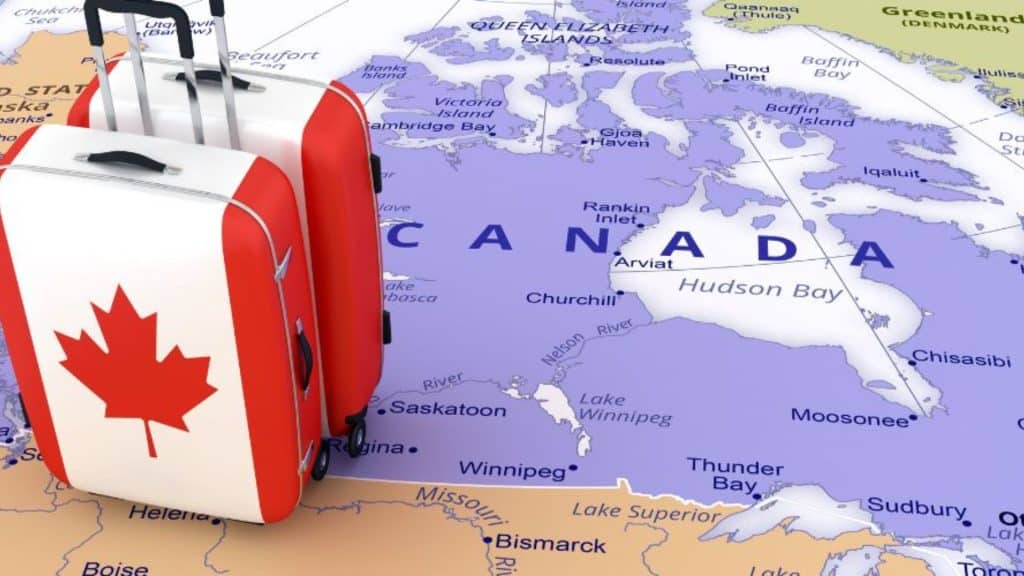As 2024 has come to a close, migration patterns across Canada tell a compelling story about where people are heading and why. U-Haul has provided their year end Growth Index report, and once again Alberta stands out as the top province for interprovincial movers for the second straight year. These trends, drawn from one-way U-Haul customer transactions, paint a clear picture of changing priorities for Canadians. Here’s what the numbers reveal:
Alberta: The Land of Opportunity (Again)
For the second consecutive year, Alberta is Canada’s top growth province, attracting 51.2% of U-Haul’s incoming one-way traffic. Calgary and Edmonton are the clear standouts, holding the top two spots in the growth cities ranking. Calgary is the No. 1 U-Haul growth city for the second year in a row, while Edmonton rose to No. 2. Medicine Hat also made a splash, joining the ranks as a key growth area.
Why Alberta? It’s a mix of affordable housing, job opportunities, low taxes, and access to the stunning Canadian Rockies. “People are moving to Alberta because of the opportunities and investments being made in the province,” says Naga Chennamsetty, U-Haul Area District Vice President. These factors have made Alberta a magnet for Canadians looking for a fresh start.
British Columbia: Beauty and Balance
While Alberta takes the crown, British Columbia holds its ground as the second most popular destination province. Known for its natural beauty and slower pace of life, BC continues to attract movers to cities like Chilliwack, Sidney, Trail, and Kelowna, all of which made the top 25 growth cities list.
The province’s appeal isn’t just about aesthetics. Retirees and remote workers are flocking to smaller BC cities for a balanced lifestyle. For those who prioritize quality of life over the hustle and bustle of urban centers, BC remains a top choice.
Ontario: Smaller Cities Shine
Ontario’s migration story is nuanced. While the province ranked last for netting U-Haul customers (with 50.7% of one-way traffic leaving), it still claimed 16 of the top 25 growth cities. The stars of the show? Smaller cities and recreational hubs like Belleville, Trenton, and Pembroke, which are attracting residents seeking affordability and a quieter lifestyle.
“The trend seems to be people are looking for more affordable housing in popular recreational areas with less hustle and bustle than the larger cities,” explains Jake Spelic, U-Haul Area District Vice President. This shift indicates that even within high-cost provinces, Canadians are finding ways to adapt and thrive.
Smaller Provinces on the Rise
Several smaller provinces also made gains in 2024. Newfoundland and Labrador, New Brunswick, and Saskatchewan showed notable growth. These areas offer affordability and a slower pace of life, appealing to those looking to escape the fast-paced environments of larger provinces. Prince Edward Island and Nova Scotia also continue to attract niche groups of movers.
2024 U-Haul Rankings: Provinces
- Alberta (1 in 2023)
- British Columbia (2 in 2023)
- Newfoundland & Labrador (7 in 2023)
- New Brunswick (3 in 2023)
- Saskatchewan (4 in 2023)
- Prince Edward Island (6 in 2023)
- Quebec (5 in 2023)
- Manitoba (8 in 2023)
- Nova Scotia (9 in 2023)
- Ontario (10 in 2023)
2024 U-Haul Rankings: Cities
- Calgary, AB (1 in 2023)
- Edmonton, AB (3 in 2023)
- Belleville, ON (20 in 2023)
- Trenton, ON (14 in 2023)
- Pembroke, ON
- Brantford, ON (10 in 2023)
- Medicine Hat-Redcliff, AB
- Collingwood, ON (11 in 2023)
- Parry Sound, ON
- Chatham-Kent, ON (7 in 2023)
- Innisfil, ON
- St. Thomas, ON
- Barrie, ON
- Woodstock, ON
- Lindsay, ON
- Chilliwack, BC (23 in 2023)
- Owen Sound-Meaford, ON
- Peterborough, ON
- Sydney, NS
- Sidney, BC
- Sarnia, ON (21 in 2023)
- Trail, BC
- Kelowna, BC (4 in 2023)
- Orillia, ON (12 in 2023)
- Nanaimo, BC (17 in 2023)
What These Trends Mean for Investors
For real estate investors, these migration patterns offer a roadmap for opportunity. Here’s what the data suggests:
- Alberta: Booming demand for housing and commercial developments in Calgary, Edmonton, and Medicine Hat.
- British Columbia: Smaller cities catering to retirees and remote workers present strong opportunities.
- Ontario: Growth in recreational areas and smaller cities calls for affordable, high-quality developments.
- Smaller Provinces: Emerging markets with niche appeal, particularly for residential and vacation properties.
Final Thoughts: Migration Is Reshaping Canada
The 2024 U-Haul data reveals a shifting Canadian landscape. From Alberta’s economic strength to BC’s scenic allure and Ontario’s smaller city boom, Canadians are making moves that align with their priorities. For investors and stakeholders, these trends are an invaluable guide to where the country’s housing and development opportunities lie. Ready to seize the moment?




